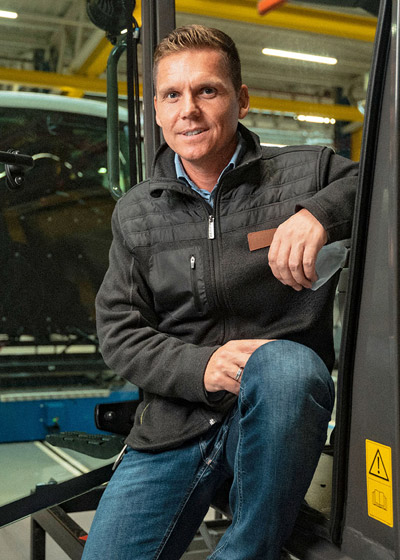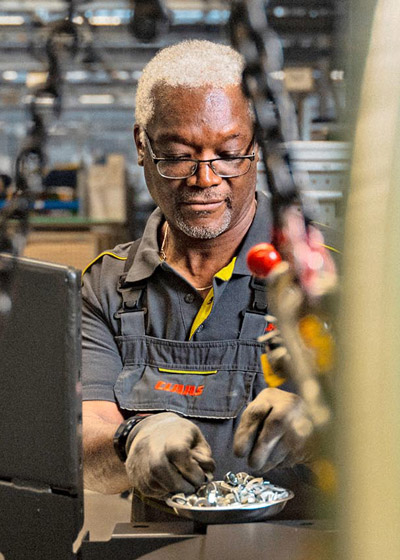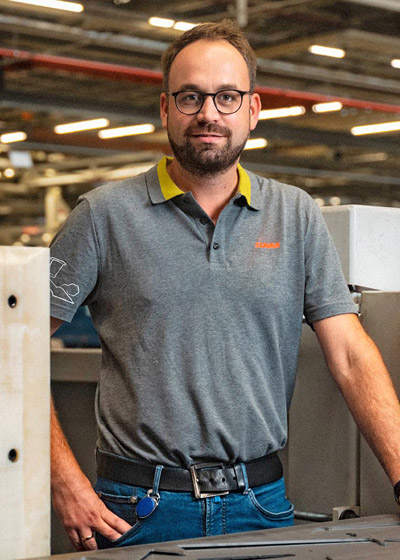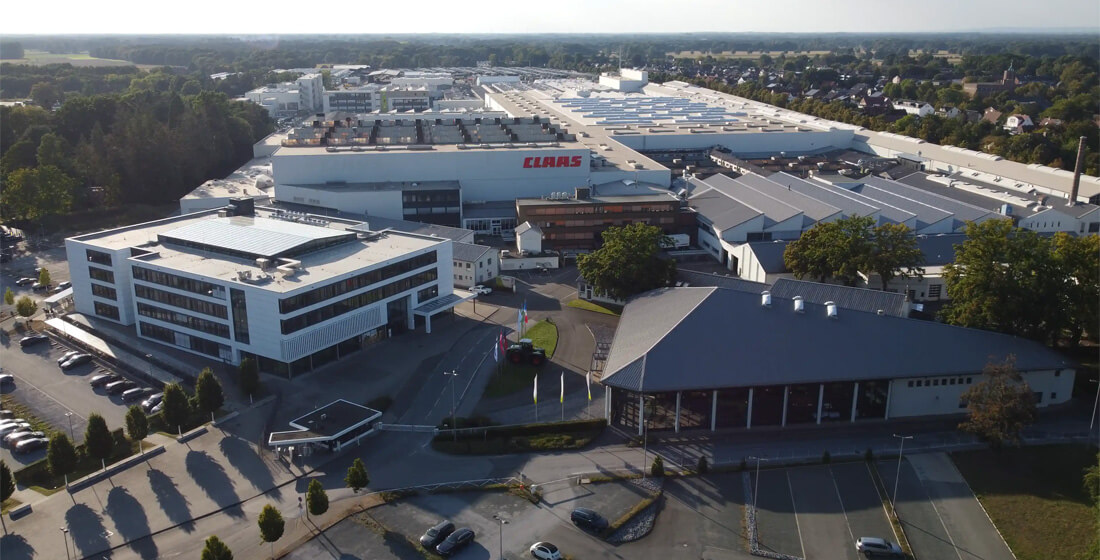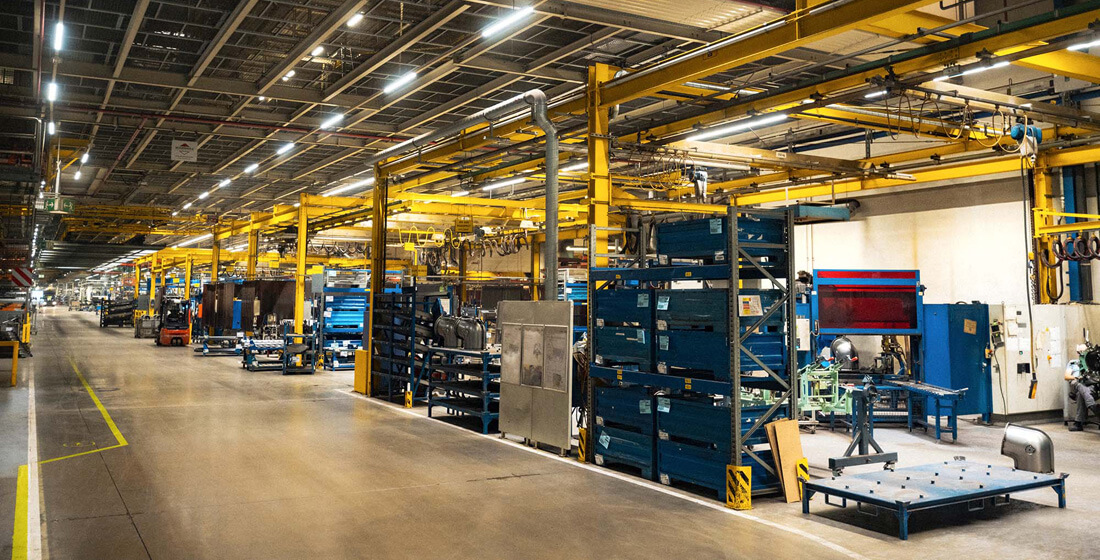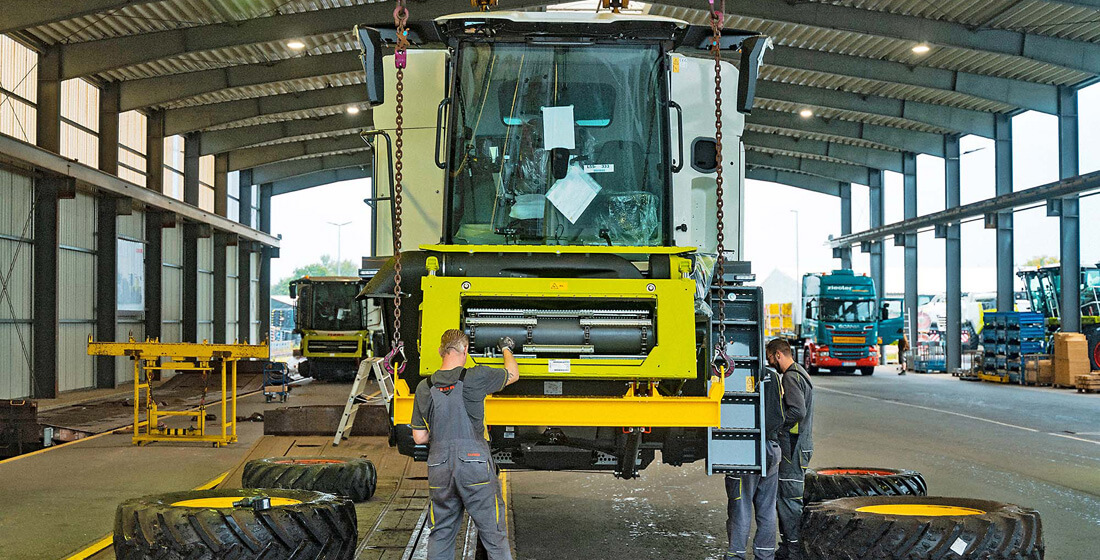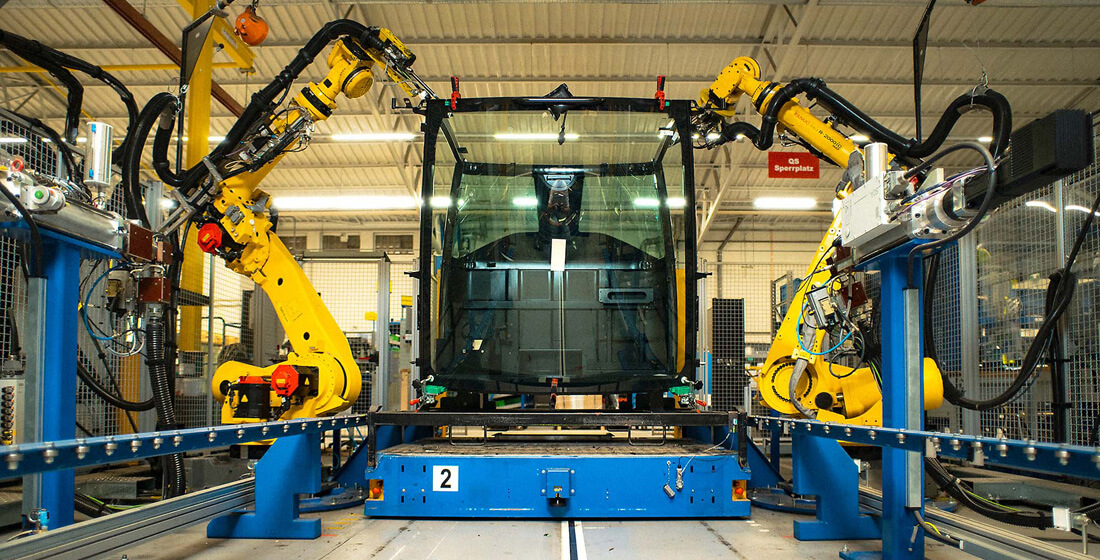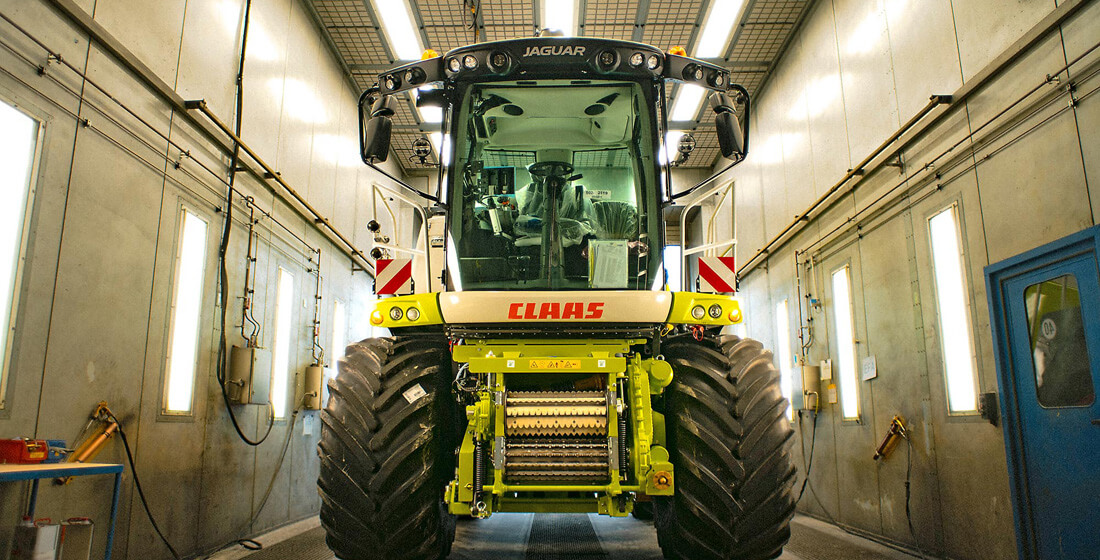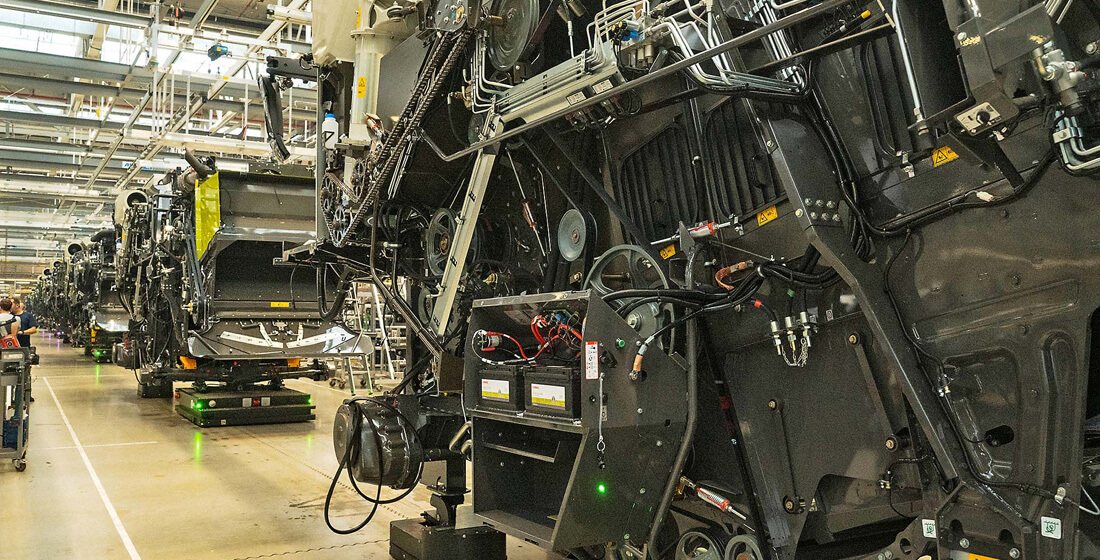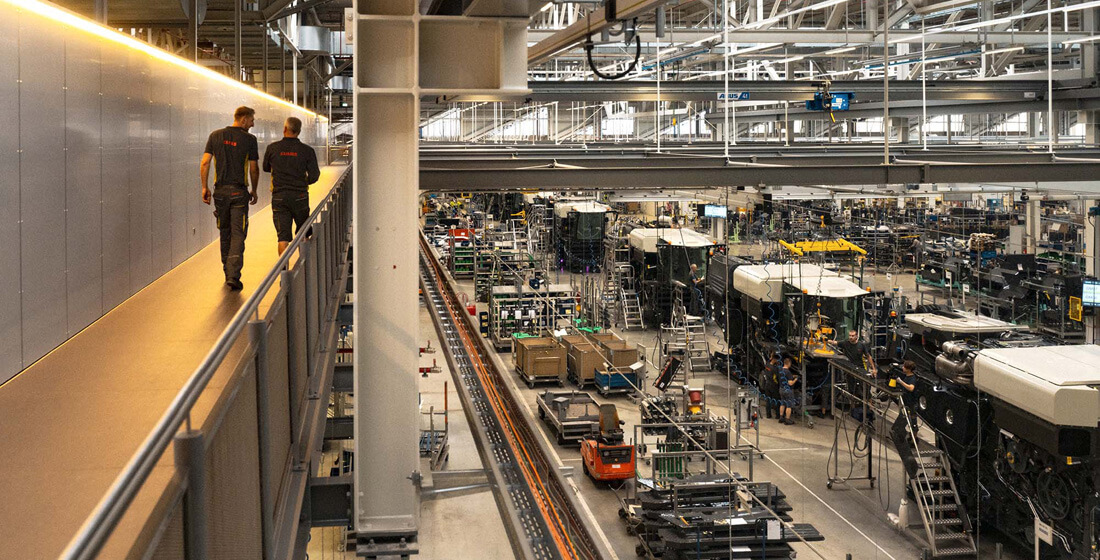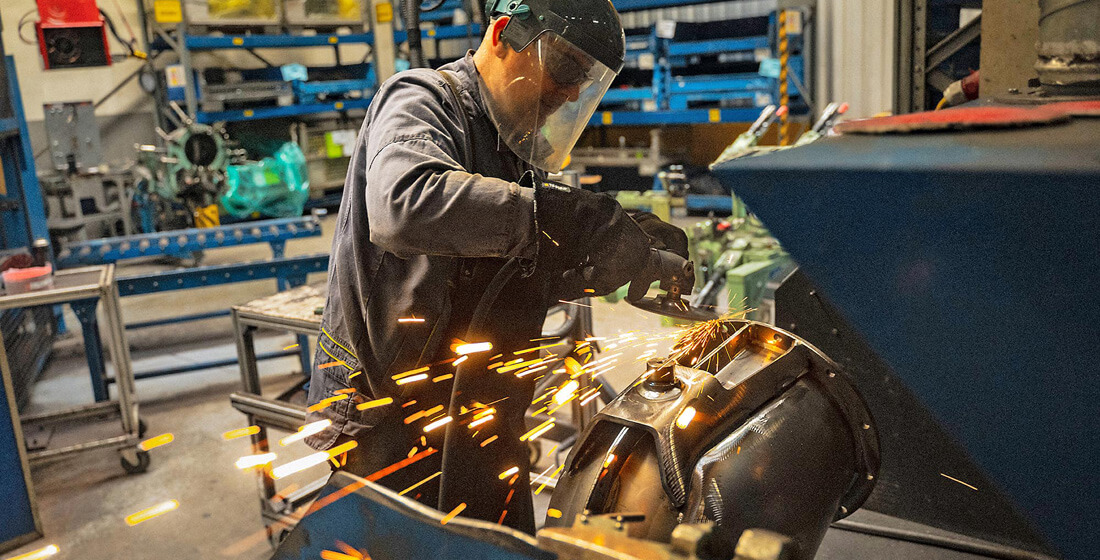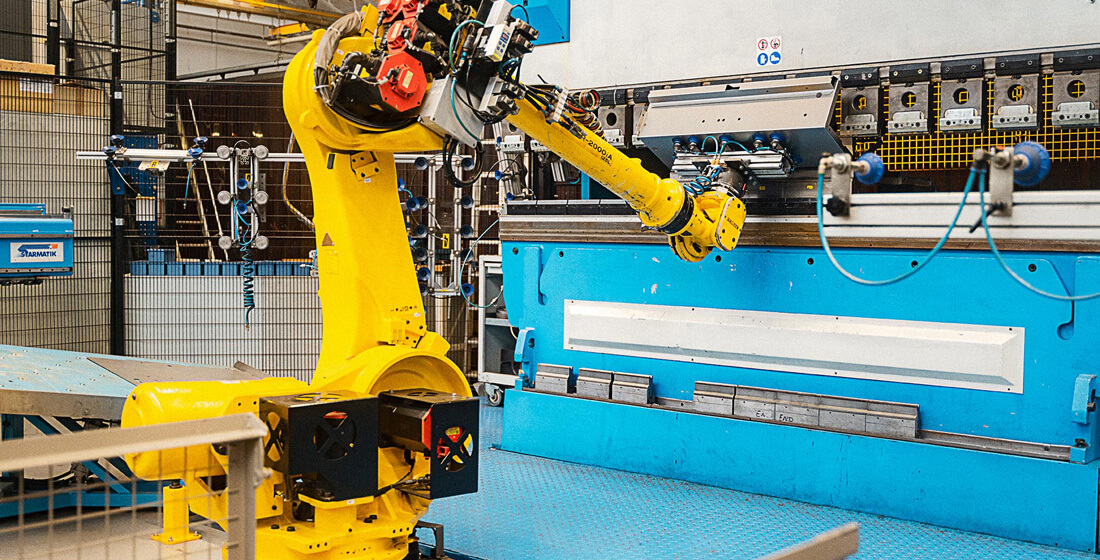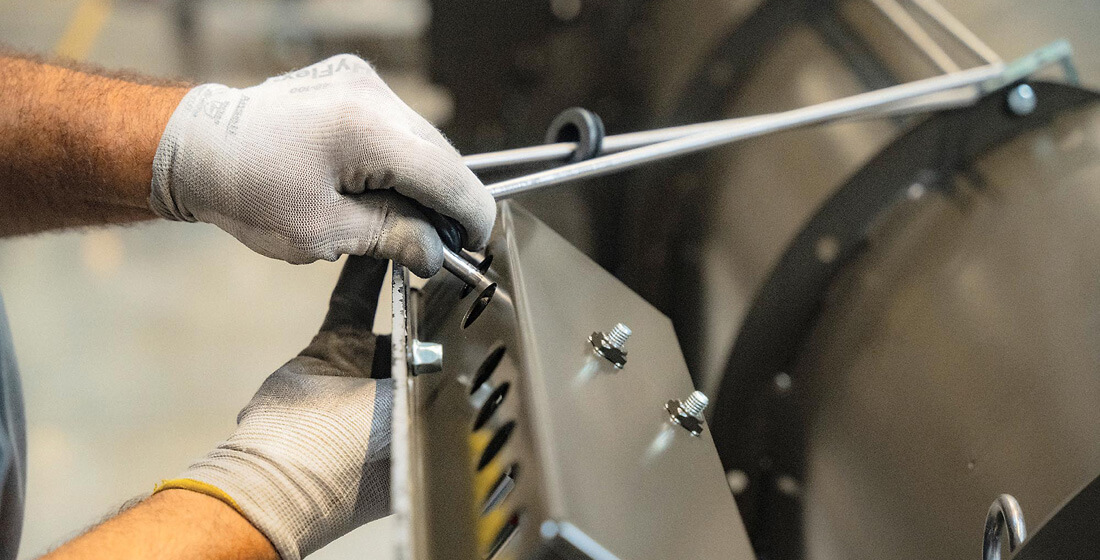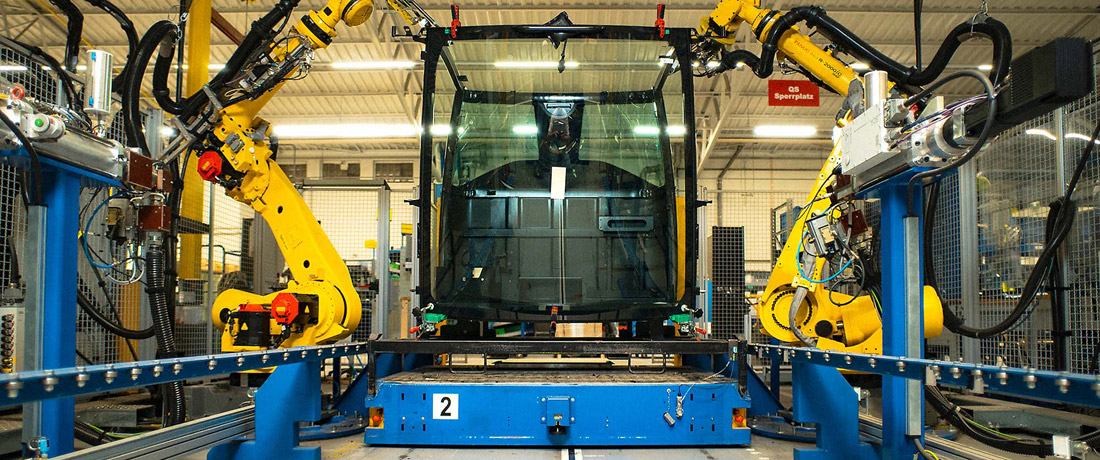
The global headquarters
We manufacture and assemble at over ten production facilities worldwide. Our main factory in Harsewinkel works closely with our international sites – as a partnership of equals – to ensure the highest quality standards at all times.
Minus 20 degrees and sleet: when Lisane Volkeri arrived at the CLAAS factory in Omaha, Nebraska, in January 2018, it was so cold that the entrance door had frozen shut. "The temperatures came as a real shock to me, but my colleagues gave me a very warm welcome", said the 31-year-old engineer with a laugh.
The warm reception was all the more important given that the team had a major challenge on their hands. They had to prepare the Omaha factory for the full-scale production of a new series of the LEXION large combine harvester – model numbers 8900–5300 – just a few months after the prototype had been assembled for the first time in Harsewinkel.
The goal was to be able to produce the machines in the American factory to exactly the same standards as the main production plant within two years – even though Omaha is more than 7,000 km away from Harsewinkel as the crow flies.
Made by CLAAS
And for many, Harsewinkel is still synonymous with CLAAS. The small town in Münsterland became the company headquarters in 1919. Since 1936, more than 450,000 combine harvesters have rolled off the production line. Today around 2,300 employees work on a production area of 400,000 m2. The LEXION large combine harvester, JAGUAR forage harvester and XERION large tractor are just some of the products manufactured here.
The factory is one of the most advanced production plants for combine harvesters and forage harvesters in the world – partly thanks to the ‘SynPro 2020’ modernisation project. The intelligent production processes and test procedures are second to none.
Yet there is far more to CLAAS than Harsewinkel. The Group now has over ten production facilities worldwide – in China, France, Hungary and the USA, for example – all of which operate on the same footing as the main factory. “For us, it's really important that all our machines, wherever they are manufactured, are 'made by CLAAS' and thus satisfy our quality standards in full", says executive board member Jan-Hendrik Mohr.
Step-by-step guide to setting up a new factory
One of those responsible for ensuring that CLAAS remains CLAAS throughout the world is Bernd Schapmann, manager of the main combine harvester assembly line in Harsewinkel. He has worked for the Group for 32 years and has helped set up several international production plants. "Every site is treated the same way", he explains. "We implement the same CLAAS standards of quality everywhere."
We do this by guiding each production plant step-by-step along the way until it reaches the point of being able to manufacture independently. New plants start with the ‘semi-knocked down’ stage. This means that the employees on site assemble individual parts on a largely finished machine supplied by another plant. Harsewinkel supports them every step of the way, for example by providing parts lists and work plans.
Then comes the ‘completely knocked down’ stage. Now only some of the components and assemblies are supplied to the new plant. Others are sourced from local suppliers. The next stage is localisation: the plant purchases only individual parts from other CLAAS factories and sources the majority of parts from a supplier network. The final stage of development is reached when the new plant has found suppliers that are so good that other CLAAS plants also use them.
New production plants are closely supervised by Harsewinkel in the first few years. Experienced colleagues from the main factory are on site to provide assistance in all areas: management, planning, production and quality assurance. At the same time, staff from the new site receive training in Harsewinkel. "The main aim is to develop a common understanding of our standards", explains Schapmann. For example, how do you assess a paint defect and decide when it should be reworked?
"It's important to stress that at Harsewinkel we always act in an advisory role, we are never directive", says Schapmann. "If colleagues need help, we provide it, but we are not the centre of the universe."
New suppliers are carefully vetted.
The same is true of quality management, which is firmly embedded in every site as a dedicated function. The QM bosses report both within the matrix function and to Peter Schonefeld in the corporate function. He is Senior Director Corporate Quality & CLAAS Excellence System and is based in Harsewinkel.
But it's not about issuing unilateral instructions. "We work together across all our locations", stresses Schonefeld. The quality managers regularly speak to one another, agree targets relating to supplier performance, for example, or work together on quality-related projects.
When one factory is planning to produce a new product or feature, they select the necessary processes – incoming goods inspections or quality checks along the assembly line, for example – from a group-wide process landscape.
CLAAS also has standard procedures in place worldwide for checking suppliers. New suppliers are vetted as part of a comprehensive auditing process which involves assessing their technological expertise, supplier stability and financial figures.
The quality management departments at the various plants also cooperate during production. If deviations occur at one production plant which exceed a few parts per million, the QM managers agree internally who is to do the troubleshooting with the supplier.

"Together as equals"
Executive board member Jan-Hendrik Mohr explains in an interview how the company headquarters in Harsewinkel works closely with CLAAS locations around the world.
Interview with Jan-Hendrik MohrReciprocal visits
Consistently outstanding products – that is the objective of the test engineering department under Stephan Dohmann. His department is responsible for working out the routines for testing machines at our locations all around the world. "Our challenge is to ensure that a machine in Harsewinkel is commissioned in almost exactly the same way as in Omaha, for example", explains Stephan Dohmann.
Test engineers at the different plants work with the test engineering centre in Harsewinkel to determine how a certain product should be tested and which hard- and software should be used.
In addition, specialist test engineers from Harsewinkel regularly visit our international locations to see how they operate and to exchange ideas with their colleagues. By the same token, test engineers from other production plants visit the CLAAS headquarters from time to time to keep abreast of changes to test engineering and commissioning procedures at Harsewinkel.
"The basic configuration of the test equipment still happens here in Harsewinkel in most cases", says Dohmann.
But we all work together to ensure that we always deliver the same CLAAS quality, regardless of where the product is made.
Link between Harsewinkel and Omaha
Working together as equals is something that Lisane Volkeri also experienced during her time in Omaha. When she arrived there in 2018, the site was already in the localisation phase. So her job was to help prepare for the production of the new LEXION 8900–5300 under local conditions with parts sourced from local suppliers.
Volkeri was part of a team of six tasked with production planning. At which point in production is which component assembled using which tool and in which way? How long does this assembly step take? The team's job was to work out the answers to these questions and devise a work schedule.
"In a sense, I acted as the link with the main factory", says Volkeri. "I knew many people in Harsewinkel and could relay questions between the two factories." A small number of this generation of LEXION had already been assembled at the German factory. So there was experience in some areas. But the team in Omaha was constantly coming up with solutions which were of interest to Harsewinkel too.
“I still remember when we turned the keys in the ignition and the first machine to roll off the Omaha assembly line started up", explains Volkeri. “It was a fantastic feeling.” She returned to Harsewinkel in October 2019 with the job done and full-scale production of the new LEXION series about to begin. She would like to visit her old team in Omaha again soon. Hopefully the weather will be warmer this time.


